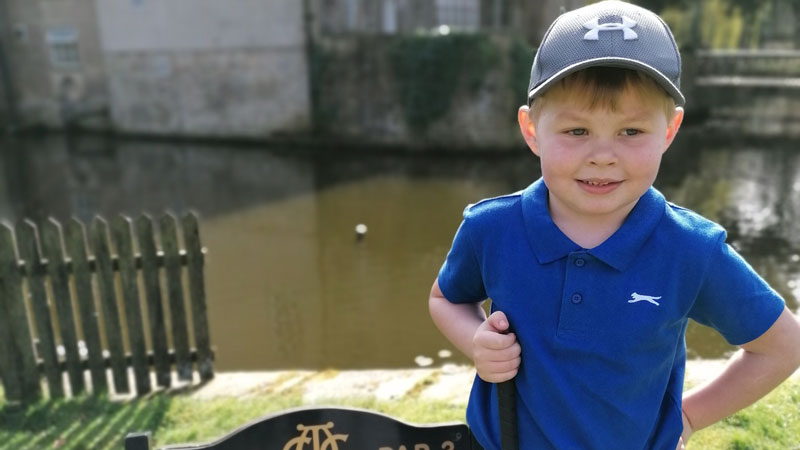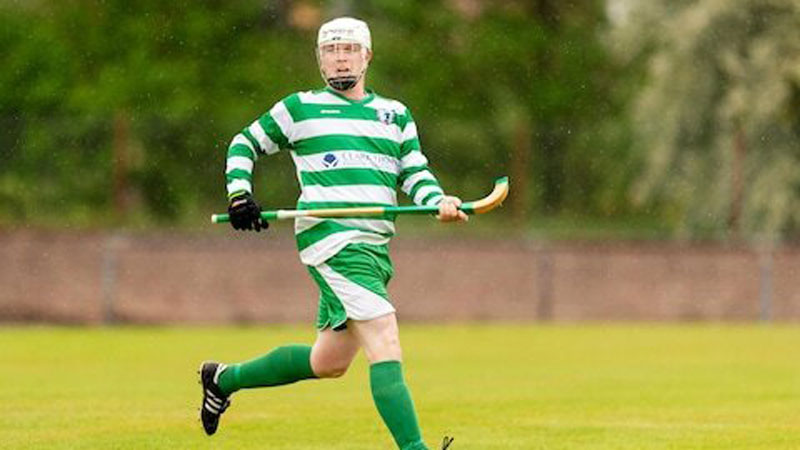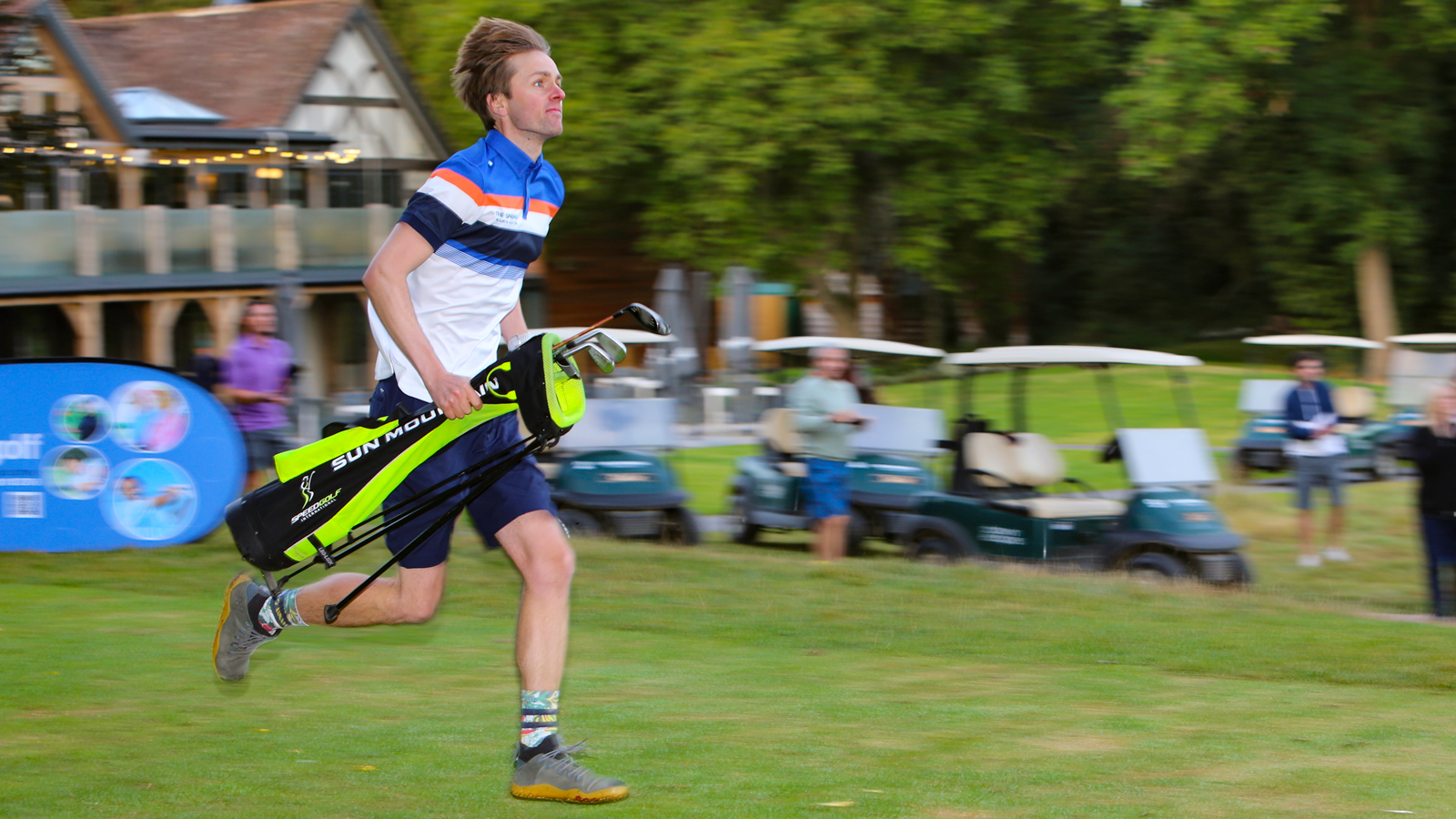10 things to note on the eve of the 2016 LAAC
What do we know as the competitors prepare for tomorrow's first round?


On the eve of the 2016 LAAC (Latin America Amateur Championship), what do we know and what can we expect from the second instalment of the tournament?
After exploring the course and facilities at Casa de Campo today, and talking with a number of the competitors, I’ve found out a bit more about how the layout is going to play and what the golfers are expecting from the event. Here are 10 things I’ve picked up on.
1 – These guys are focused
The tournament has moved on from last year and the players in the field are fully aware of the significance of the event they’re competing in, and of the potential rewards. The general consensus from the competitors is that they didn’t know what to expect in Buenos Aires last year, but now they do. Defending champion Matias Dominguez summed it up by saying; “everyone is here this year, and people have come to win.”
2 – Georgia’s on their minds
All of those who feel they have a chance of winning (and a good portion of the field do) are thinking about The Masters, even if they protest otherwise. “Of course, we all think about it,” said 18-year-old Luis Gerardo Garza from Mexico. “When I was a little younger, playing at Augusta was a distant dream. Now, with this event, it just seems a little closer.”
3 – It’s wide open
Get the Golf Monthly Newsletter
Subscribe to the Golf Monthly newsletter to stay up to date with all the latest tour news, equipment news, reviews, head-to-heads and buyer’s guides from our team of experienced experts.
Santiago Gomez of Colombia (tied 5th last year) made that clear when he was asked who he felt he would need to beat to claim victory this time out. “There isn’t one, or two or even five guys I could name,” he said. “There are so many people in the field who could take victory here if they have a good week. I think many of us believe we have a good enough game to win, it’s just about delivering.”
4 – This event is a key target
I’m surprised to see just how many of the players who teed it up in Buenos Aires are back to contend this year. Many older guys who I thought might have turned pro are back to try their luck in this event. With the prizes on offer that’s hardly surprising – For the winner: an invite to Augusta, entry to the 2016 Amateur and U.S. Amateur Championships; both the winner and runner-up receive exemptions into The Open final qualifying and sectional qualifying for the US Open.
Matias Dominguez of Chile is back to defend his title and other more (relatively) senior players like Andre Tourinho of Brazil who was tied third last year are back for another crack of the whip.
5 – Tosti has had quite a year
Last year’s runner-up Alejandro Tosti, who was inconsolable at the conclusion of the tournament in Buenos Aires, has been through quite a lot this year: He’s started at the University of Florida, he’s learned to speak English almost flawlessly, he’s received guidance from fellow Argentinian Angel Cabrera, he struggled with homesickness in his early days at College and then fell gravely ill when an infected tooth led to encephalitis. Despite all that, he’s confident of going one better this time out. “It’s the same tournament but it’s different mentally. I know I can do it now.”
6 – The course is tough
There are obvious hazards on the Teeth of the Dog course at Casa de Campo, principal among them: the ocean. It’s a factor on seven of the 18 holes and, depending on the wind, its presence is extremely threatening. But there’s more for the players to worry about. From the tee, the layout is relatively generous, but out-of-bounds lurks on a number of holes: most are lined by luxurious properties and if a ball ends up on the front lawn of one of them, the perpetrator will be teeing it up again.
Rules of golf - boundary walls:
Then the greens and surrounds appear challenging. The putting surfaces are currently pretty firm and that will place a premium on finding the fairways. If approaching from the rough it’ll be extremely difficult to get any stop on the ball. Then, chipping and pitching looks potentially tough, the ball is rolling out and a deft touch will be required. That might suit:
7 – Juan Alvarez
The Uruguayan is the highest ranked player in the field, currently 34th on the World Amateur Golf Ranking. He performed well in this tournament last year and has won seven ranking tournaments since then. He finished second in the Argentine Open on the PGA Tour Latinoamerica and has represented Argentina in the World Amateur Team Championship on three occasions.
His short game is his strength and that could come to the fore this week. “Yes, short game is my strongest asset,” he said. “But I continue to work on it.” He’s another man trying to put The Masters out of his mind. “First I have to play well, then I can think about the Masters.” But then he let slip, “I dreamed of playing at Augusta when I was a little boy, then comes a tournament which gives you a chance of that… it’s pretty cool.”
8 – Local knowledge…
… Could play a part this week. 18-year-old Juan Jose Guerra of the Dominican Republic who is a freshman at Nova Southeastern University has played this course many times and has been here for almost a month practising. “Yes, of course it gives me an advantage over the field,” he said. “I just have to make it count.”
9 – The par 3s
They could be important, particularly those on the water’s edge. The 5th doesn’t look too intimidating on the card at just 160 yards, but it’s to a small green jutting out into the sea. Then the 7th is something of a brute. It’s 229 yards and 205 of those are carry across the water, there’s no bailout. Today the wind was helping and most still required a hybrid to reach. If the wind turns to hurt, it could be a monster.
Driving into the wind:
10 – The Scouts are out
We know for certain that at least one US college coach is already here this week to look at prospective recruits. Santiago Gomez of Colombia confirmed his coach is here this week, not just to look at his swing. He’s on the lookout for talented youngsters to recruit for Nova Southeastern. We’re only an hour’s flight from Miami here so it’s not much of a hop for many coaches to come down for a look. They will only be able to target 50% of the field mind you – the other half of those entered are already on the books of US colleges.

Fergus is Golf Monthly's resident expert on the history of the game and has written extensively on that subject. He has also worked with Golf Monthly to produce a podcast series. Called 18 Majors: The Golf History Show it offers new and in-depth perspectives on some of the most important moments in golf's long history. You can find all the details about it here.
He is a golf obsessive and 1-handicapper. Growing up in the North East of Scotland, golf runs through his veins and his passion for the sport was bolstered during his time at St Andrews university studying history. He went on to earn a post graduate diploma from the London School of Journalism. Fergus has worked for Golf Monthly since 2004 and has written two books on the game; "Great Golf Debates" together with Jezz Ellwood of Golf Monthly and the history section of "The Ultimate Golf Book" together with Neil Tappin , also of Golf Monthly.
Fergus once shanked a ball from just over Granny Clark's Wynd on the 18th of the Old Course that struck the St Andrews Golf Club and rebounded into the Valley of Sin, from where he saved par. Who says there's no golfing god?
-
 Volvo China Open 2025 Picks, Odds And Predictions
Volvo China Open 2025 Picks, Odds And PredictionsFollowing a break for The Masters, the DP World Tour returns for the final two weeks of its Asian Swing and the Volvo China Open is the penultimate event
By Jonny Leighfield
-
 Rory McIlroy's Sports Psychologist Explains Why He 'Didn't Talk' To Bryson DeChambeau In Masters Final Round
Rory McIlroy's Sports Psychologist Explains Why He 'Didn't Talk' To Bryson DeChambeau In Masters Final RoundDeChambeau raised eyebrows at Augusta National when claiming that McIlroy wouldn't engage in conversation during the final round of The Masters
By Jonny Leighfield
-
 Is This FootJoy's Most Exciting New Golf Shoe In Years?
Is This FootJoy's Most Exciting New Golf Shoe In Years?Dan Parker discusses whether the new FootJoy Fuel golf shoe has the potential to be FootJoy's most exciting to date...
By Dan Parker
-
 Governing Bodies Crack Down On Distance As Driver Shaft Lengths Limited
Governing Bodies Crack Down On Distance As Driver Shaft Lengths LimitedThe R&A and USGA have introduced a new local rule to ensure professionals and elite amateurs do not use 48-inch driver shafts
By Elliott Heath
-
 Five-Year-Old Prodigy Raising Money And Awareness For Organ Donation
Five-Year-Old Prodigy Raising Money And Awareness For Organ DonationGeorge is taking on the challenge to raise money and awareness for organ donation
By Andrew Wright
-
 Robert MacIntyre Returns To Shinty After Ryder Cup Disappointment
Robert MacIntyre Returns To Shinty After Ryder Cup DisappointmentThe left-hander has been in action for his local shinty side, Oban Celtic
By Andrew Wright
-
 Pro Plays 36 Holes In Under 80 Minutes To Win British Speedgolf Championship
Pro Plays 36 Holes In Under 80 Minutes To Win British Speedgolf ChampionshipBuckinghamshire professional Luke Willett took the British Speedgolf title
By Fergus Bisset
-
 "A Real Kick In The Teeth" - Greenkeeper After "Embarrassment" Course Comments
"A Real Kick In The Teeth" - Greenkeeper After "Embarrassment" Course CommentsWe chat to James Tibbles, head greenkeeper at Andover GC, after he was subject to negative comments on the course's condition
By Elliott Heath
-
 Tiger Woods' 2002 Backup Putter Sells For $393,300
Tiger Woods' 2002 Backup Putter Sells For $393,300Tiger Woods' 2002 Backup Putter Sells For $393,300
By Matt Cradock
-
 Olivia Lee Wins 2021 Peter McEvoy Trophy
Olivia Lee Wins 2021 Peter McEvoy TrophyOlivia Lee has become the first female to win the historic Peter McEvoy Trophy.
By Dan Parker